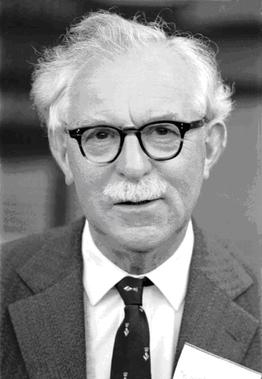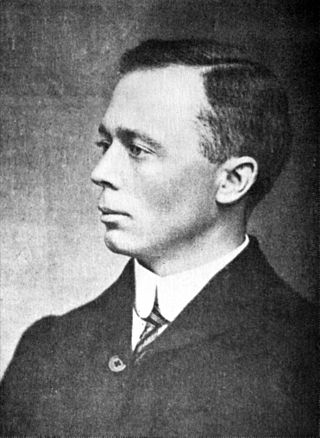
Johann Müller was a Swiss botanist who was a specialist in lichens. He published under the name Johannes Müller Argoviensis to distinguish himself from other naturalists with similar names.

Professor David John Mabberley, is a British-born botanist, educator and writer. Among his varied scientific interests is the taxonomy of tropical plants, especially trees of the families Labiatae, Meliaceae and Rutaceae. He is perhaps best known for his plant dictionary The plant-book. A portable dictionary of the vascular plants. The third edition was published in 2008 as Mabberley's Plant-book, for which he was awarded the Engler Medal in Silver in 2009. As of June 2017 Mabberley's Plant-book is in its fourth edition.

William Thomas Stearn was a British botanist. Born in Cambridge in 1911, he was largely self-educated and developed an early interest in books and natural history. His initial work experience was at a Cambridge bookshop, but he also had a position as an assistant in the university botany department. At the age of 29 he married Eldwyth Ruth Alford, who later became his collaborator, and he died in London in 2001.

Elmer Drew Merrill was an American botanist and taxonomist. He spent more than twenty years in the Philippines where he became a recognized authority on the flora of the Asia-Pacific region. Through the course of his career he authored nearly 500 publications, described approximately 3,000 new plant species, and amassed over one million herbarium specimens. In addition to his scientific work he was an accomplished administrator, college dean, university professor and editor of scientific journals.

Nancy Tyson Burbidge was an Australian systemic botanist, conservationist and herbarium curator.

The Field Elm cultivar Ulmus minor 'Sowerbyi', commonly known as the Sowerby Elm, was described by Moss in The Cambridge British Flora (1914). The tree, once referred to as the 'Norfolk Elm' by Smith, was commonly found in the hedgerows and woods of Norfolk, Cambridgeshire, and Huntingdonshire in the early 20th century before the advent of Dutch elm disease. Melville considered it a hybrid of 'Coritana'.
Mary Douglas Tindale was an Australia Australian botanist. She was an Australian botanist specialising in pteridology (ferns) and the genera Acacia and Glycine. She devoted her life to the study of ferns, and her name is widely associated with the group of flowerless plants.

William Ramsay McNab was a Scottish physician and botanist.

Henry Harold Welch Pearson was a British-born South African botanist, chiefly remembered for founding Kirstenbosch National Botanical Garden in 1913.

Isaac Henry Burkill was an English botanist who worked in India and in the Straits Settlements. He worked primarily in economic botany but published extensively on plant biology, ethno-botany, insect-plant interactions and described several species. He published a two volume compilation on the plants of economic importance in the Malay Peninsula, collating local names and knowledge. He also wrote a detailed history of botany in India. The plant genera Burkillia and Burkillianthus were named in his honour.
Halopyrum is a genus of Asian and African plants in the grass family. The only known species is Halopyrum mucronatum, native to the Indian Subcontinent, Iran, the Arabian Peninsula, Socotra, Madagascar, and eastern + northeastern Africa.
Lasiurus is a genus of Asian and African plants in the grass family, Poaceae, found primarily in arid regions. The only known species is Lasiurus scindicus, native to drier regions of northern Africa and southwestern Asia, from Morocco and Mali to India.
Ochthochloa is a genus of desert plants in the grass family native to the Sahara and Arabian Deserts. The only known species is Ochthochloa compressa, whose native range extends from Algeria to Uttarakhand.
The Oman Botanic Garden is a development of the Diwan of Royal Court in Oman, with plants, landscapes, and cultural traditions native to Oman. The gardens are located on 423 hectares in Al Khoud.

Tephrosia apollinea is a legume species, native to southwest Asia and northeast Africa.

Maureen Elizabeth Church is a Welsh-born botanist and a self-trained botanical illustrator. Her preferred technique was that of line drawings and her work is in the permanent collections of the Forest Herbarium in Oxford, the East African Herbarium in Nairobi, the Herbarium at Kew, and the University of Edinburgh.
William Grant Craib was a British botanist. Craib was Regius Professor of Botany at Aberdeen University and later worked at the Royal Botanic Gardens, Kew.
Ian Charleson Hedge was a Scottish botanist at the Royal Botanic Gardens in Edinburgh. Hedge made important contributions to the flora of Iran and Iraq, and was a recognised authority on the flora of south-west Asia. He named more than 300 new plant species.
Peter Shaw Green was an English botanist.
Geraldine Anne Allen is a botanist, professor of biology, and herbarium curator at the University of Victoria in British Columbia, Canada. She obtained formal education at the University of British Columbia and Oregon State University, earning a Doctor of Philosophy degree in botany and plant pathology from the latter in 1981. During her career, she has authored or co-authored over 50 publications, including genera chapters for Flora of North America and the Jepson Manual. She also has authored several species of the Erythronium genus.










